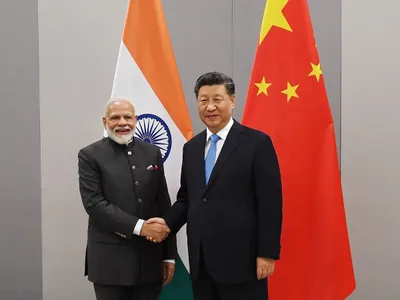In a big diplomatic breakthrough, India and China have agreed to resolve their long-standing border disaster that has been ongoing since 2020. The announcement, made by Indian International Secretary Vikram Misri on October 21, 2024, marks a pivotal second within the relations between the 2 Asian giants.
The settlement focuses on patrolling preparations alongside the Line of Precise Management (LAC) within the India-China border space, resulting in disengagement and eventual decision of the problems that arose in 2020. This growth comes after a number of rounds of diplomatic and navy talks between the 2 nations over the previous a number of weeks.
Background of the Disaster
The border standoff between India and China started in June 2020 following a violent conflict within the Galwan Valley, which resulted in casualties on each side. This incident marked essentially the most severe escalation in a long time alongside the disputed border. Since then, each nations have deployed 1000’s of troops, together with artillery, tanks, and fighter plane, within the area.
The disaster led to a big deterioration in bilateral relations, with India brazenly admitting that the ties weren’t cordial. The standoff affected varied elements of the connection, together with commerce and cultural exchanges.
Key Factors of the Settlement
Whereas the complete particulars of the settlement haven’t been disclosed, it’s understood that the pact addresses a number of vital points:
- Patrolling Preparations: The settlement establishes new protocols for patrolling alongside the LAC, which is anticipated to cut back the chance of confrontations between troops.
- Disengagement: Either side have agreed to disengage their forces from contentious factors alongside the border, together with areas like Depsang and Demchok.
- Decision Mechanism: The pact features a framework for resolving points which will come up sooner or later, emphasizing diplomatic channels over navy confrontation.
- Restoration of Standing Quo: The settlement goals to revive the scenario alongside the western Himalayan frontier to what it was earlier than April 2020.
Implications of the Settlement
This settlement has far-reaching implications for each nations and the broader area:
- Improved Bilateral Relations: The decision of the border disaster is anticipated to pave the way in which for improved diplomatic and financial ties between India and China.
- Regional Stability: The settlement contributes to better stability within the Asian area, decreasing tensions in a geopolitically delicate space.
- Financial Advantages: With diminished navy tensions, each nations can focus extra on financial cooperation and commerce.
- World Geopolitical Affect: The decision of this battle between two main powers sends a constructive sign to the worldwide group about peaceable battle decision.
Challenges Forward
Whereas the settlement is a big step ahead, a number of challenges stay:
- Implementation: The efficient implementation of the settlement on the bottom will likely be essential and will face logistical and operational challenges.
- Belief-Constructing: Rebuilding belief between the 2 nations after years of stress will likely be a gradual course of.
- Monitoring and Verification: Establishing sturdy mechanisms to observe compliance with the settlement will likely be important.
- Addressing Underlying Points: The settlement could not deal with all underlying points within the India-China relationship, which would require ongoing diplomatic efforts.
Worldwide Response
The worldwide group has welcomed this growth, seeing it as a constructive step in direction of regional stability. The settlement comes simply forward of the BRICS Summit in Russia, the place Indian Prime Minister Narendra Modi and Chinese language President Xi Jinping are anticipated to satisfy, doubtlessly additional solidifying this diplomatic breakthrough.
Conclusion
The settlement between India and China to finish the border disaster marks a big milestone of their bilateral relations. It demonstrates the facility of persistent diplomacy and the willingness of each nations to prioritize peace and stability over confrontation. Whereas challenges stay, this pact opens new avenues for cooperation and dialogue between the 2 Asian powerhouses.
As each nations transfer ahead, the main target will likely be on implementing the settlement successfully and constructing on this momentum to handle different areas of mutual concern. The decision of this disaster not solely advantages India and China but in addition contributes to the broader stability and prosperity of the Asian area and past.
